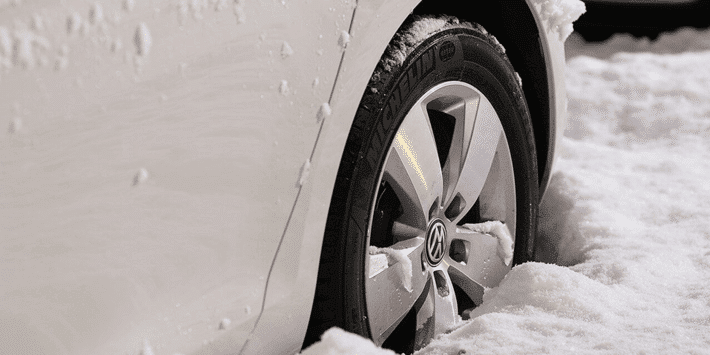Front-wheel drive, rear-wheel drive or all-wheel drive, each vehicle moves thanks to a traction force that is transmitted by the drive wheels. What is the role of each wheel and do you know the differences? It all comes down to your car, driving style and budget.

What is the difference between the drive wheel and the steered wheel?
Driving

The drive wheel is the wheel to which the engine transmits its power to allow the vehicle to move. The transmission which is a function of the engine block transforms the power from the engine rotation and transmits it to the drive wheels. They give cars the best possible grip.
Steering
Steered wheels are equipped with a system that can be directed independently of the other pair of wheels. The role of the steered wheel is to control the direction of the vehicle. It directs the path of the car and ensures safe handling and stability during cornering and braking situations.
What are the drive wheels on a car?
The drive wheels are positioned at the front or the rear of the vehicle. Except for 4x4s which have an all-wheel drive, i.e. 4 drive wheels. The drive wheels can be placed in three different ways depending on the vehicle:
- front wheel drive vehicles: drive wheels are at the front
- rear wheel drive vehicles: drive wheels are at the rear
- 4×4 vehicles: drive wheels are at the front and the rear
The vast majority of cars on the road are front wheel drive models. The drive wheels are at the front, just like the engine, which facilitates the transmission on this type of car.
Among car manufacturers, the BMW and Porsche brands historically propose rear wheel drive vehicles for sale. Recently, Renault made its new Twingo a rear wheel drive with the engine at the rear. This type of vehicle has the advantage of offering a sportier drive thanks to a better transmission of power to the ground and a more uniform weight distribution. A specific feature that can result in increased tyre wear, particularly the drive wheels on the rear axle.
This type of vehicle also requires greater vigilance as regards the type of tyre that can be fitted. It can be more complicated to drive on slippery surfaces such as on snow or ice.
Do you need 2 or 4-wheel drive?
2 or 4-wheel drive? Just like when buying tyres, think about your driving environment before you buy a car: what type of roads do you usually drive on? Do you use your car for short trips around town, a lot of motorway driving, or country roads for your leisure activities?
The all-wheel drive system on 4×4 vehicles offers additional driving comfort compared with 2-wheel drive cars on impracticable roads like non-paved paths. In regions where winter conditions are still present, 4-wheel drive vehicles offer an advantage on snow with their superior traction. For even more traction, don’t forget to equip your car with winter tyres in the conditions and season for which they are designed.
But four-wheel drive vehicles also have some drawbacks:
- Fuel consumption: A 2-wheel drive vehicle consumes less fuel than a 4-wheel drive vehicle. The latter requires more power to respond to the traction of the vehicle.
- Faster tyre wear. Indeed, the transmission of 4×4 vehicles is constantly in use to manage the unequal rotation speed between the different wheels, when one of them starts to slip, for example. This may have an impact on tyre wear and cause certain mechanisms to malfunction.




